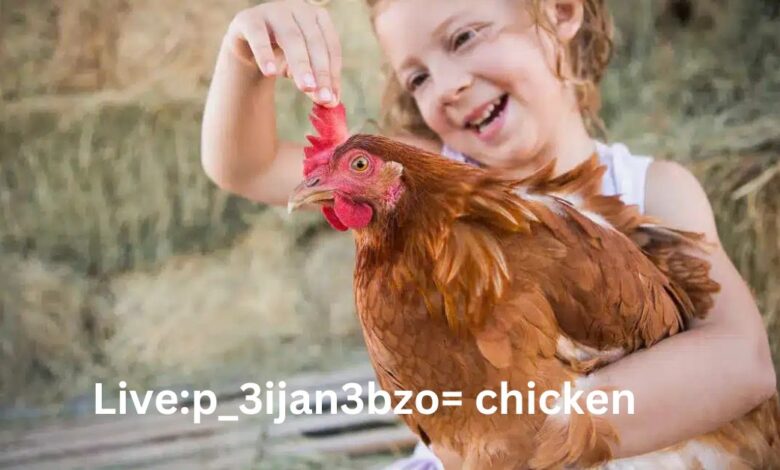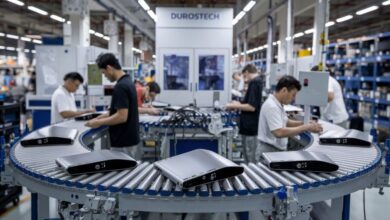Live:p_3ijan3bzo= chicken – Understanding the Identifier and Its Potential!

(live = chicken) is a unique identifier with applications in agriculture and technology. Discover its meaning, significance, and practical uses in various fields.
Whether you’re a tech enthusiast, farmer, or simply curious, this comprehensive guide aims to demystify the meaning and purpose of (live = chicken).
What is (live = chicken)? – Get A Glance!
At first glance, (live = chicken) appears to be a random string of letters and symbols. However, this identifier is far from arbitrary. In many ways, it’s akin to a digital “name tag,” designed to represent specific data about chickens within a tracking or data system.
For example, in an agricultural context, such identifiers may link to databases with details about a specific chicken’s health, age, diet, and even the farm of origin. In technology systems, identifiers like these aid in categorizing, organizing, and tracking data across large networks or databases.
The Purpose and Origins of (live = chicken) – See To Explore!
The structure and format of identifiers like (live = chicken) suggest that they are crafted for efficiency, ease of use, and scalability. Here’s how identifiers are typically structured:
- Unique Elements: Components like p_3ijan3bzo are likely used to maintain unique entries, avoiding any confusion with other data.
- Specialized Prefixes and Symbols: Prefixes such as live: may indicate specific systems or categories, while symbols like the equals sign (=) could denote data within a set category (in this case, poultry).
Why Use Unique Identifiers?
- Clarity and Precision: In fields with large datasets, unique identifiers prevent data mix-ups, making it easy to locate and access specific records.
- Enhanced Tracking: From individual chickens to flocks, identifiers make tracking details easier, which can be invaluable in monitoring health and history.
- Efficient Systems: Rather than long names, codes streamline system operations and reduce error rates by simplifying database entries.
Technical Anatomy of (live = chicken) – What Is It!
Breaking down identifiers like (live = chicken) can help us understand their components and significance:
- ‘live:’: Likely indicates that this identifier is active or part of a live tracking system.
- ‘p_3ijan3bzo’: This part may represent an internal code to distinguish this particular chicken or batch within a larger data set.
- ‘= chicken’: This suffix adds context, specifying that the identifier pertains to chickens, making it easier for users to understand the data at a glance.
This kind of structure makes data easily accessible and retrievable, allowing systems to efficiently locate and compile information based on the identifier alone.
Real-World Applications
Agriculture: Livestock Management and Traceability
In agriculture, identifiers like (live = chicken) play a major role in livestock management, supporting farmers and agribusinesses in tracking individual animals’ data. Here are some of the primary benefits:
- Health and Medical Tracking: The identifier can be used to pull up health records for each chicken, including vaccination schedules, medications, and past illnesses, allowing for quick and efficient health checks.
- Breeding and Growth Monitoring: Farmers can track growth rates, dietary needs, and breeding information, which is essential for effective poultry management.
- Supply Chain Transparency: From farm to retail, identifiers aid in tracking chickens through the supply chain. This allows for transparency in case of recalls, contamination issues, or audits, adding an extra layer of safety for consumers.
Technology: Data Organization and Unique Identification Systems
Beyond agriculture, identifiers like (live = chicken) have significant applications in the tech world, where they help in data organization and management:
- Database Management: Unique identifiers help maintain order in massive databases by assigning a unique “identity” to each entry. This makes information retrieval faster and more accurate.
- System Integration: In large organizations, systems need to communicate effectively. Identifiers help streamline information flow between different software platforms, avoiding duplications and ensuring data consistency.
- Data Security and Privacy: Since identifiers mask specific details, they offer a layer of security and privacy, especially in sensitive industries.
How (live = chicken) Enhances Industry Efficiency – The Econimical Perspective!
Unique identifiers simplify and optimize operations across various industries. Here’s a closer look at how (live = chicken) can make an impact:
- Speedy Retrieval and Updates: With a unique identifier, users can access or update specific data immediately, saving time and reducing errors.
- Improved Traceability: In agriculture, identifiers allow quick traceback in case of contamination, contributing to food safety.
- Enhanced Inventory Control: This identifier system helps manage poultry stock efficiently, ensuring accurate counts and reducing waste in the supply chain.
Potential Limitations and Challenges – What Should Be Avoided!
While unique identifiers like (live = chicken) offer numerous benefits, there are some challenges to consider:
- System Compatibility: Implementing identifiers across different systems may require software upgrades or custom solutions.
- Data Maintenance: Over time, these identifiers may need updates or reorganization to remain effective, particularly in expanding databases.
- Security Risks: Without proper safeguards, identifiers could be manipulated, potentially exposing sensitive data.
Despite these challenges, with the right management practices and technological support, unique identifiers can still provide immense value.
The Future of Unique Identifiers in Agriculture and Tech – Stay Updated!
The role of identifiers like (live = chicken) will likely grow as industries adopt digital transformation tools and IoT (Internet of Things) technologies. By integrating IoT sensors and real-time tracking:
- Health Monitoring in Real Time: Devices can transmit data instantly, updating health and location information as conditions change.
- Precision Livestock Farming (PLF): This identifier can support PLF by tracking chickens’ health, movement, and behavior, allowing for individualized care.
- Blockchain Integration: In the future, blockchain could be used alongside identifiers to secure poultry supply chain data, improving transparency and security for consumers.
FAQs:
Why are identifiers like (live = chicken) used in agriculture?
They allow for easy access to health, inventory, and location records of individual chickens, improving farm management and food safety.
How can this identifier benefit consumers?
Through traceability, consumers can verify the origins of their poultry products, adding confidence in food quality.
Are similar identifiers used in other fields?
Yes, unique identifiers are common in healthcare, manufacturing, and logistics to track items and data accurately.
Conclusion:
As technology advances, identifiers like (live = chicken) will continue to be essential for efficient, accurate data tracking and management across industries. They enhance operational efficiency, support traceability, and open up possibilities for more personalized care and management.



